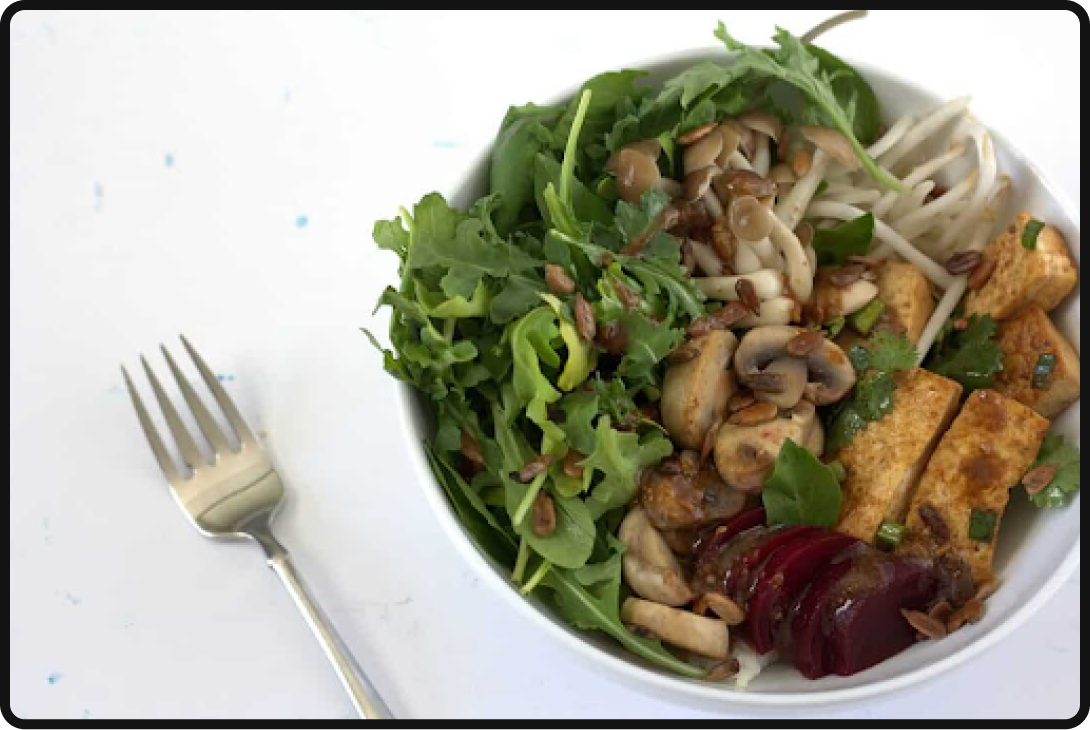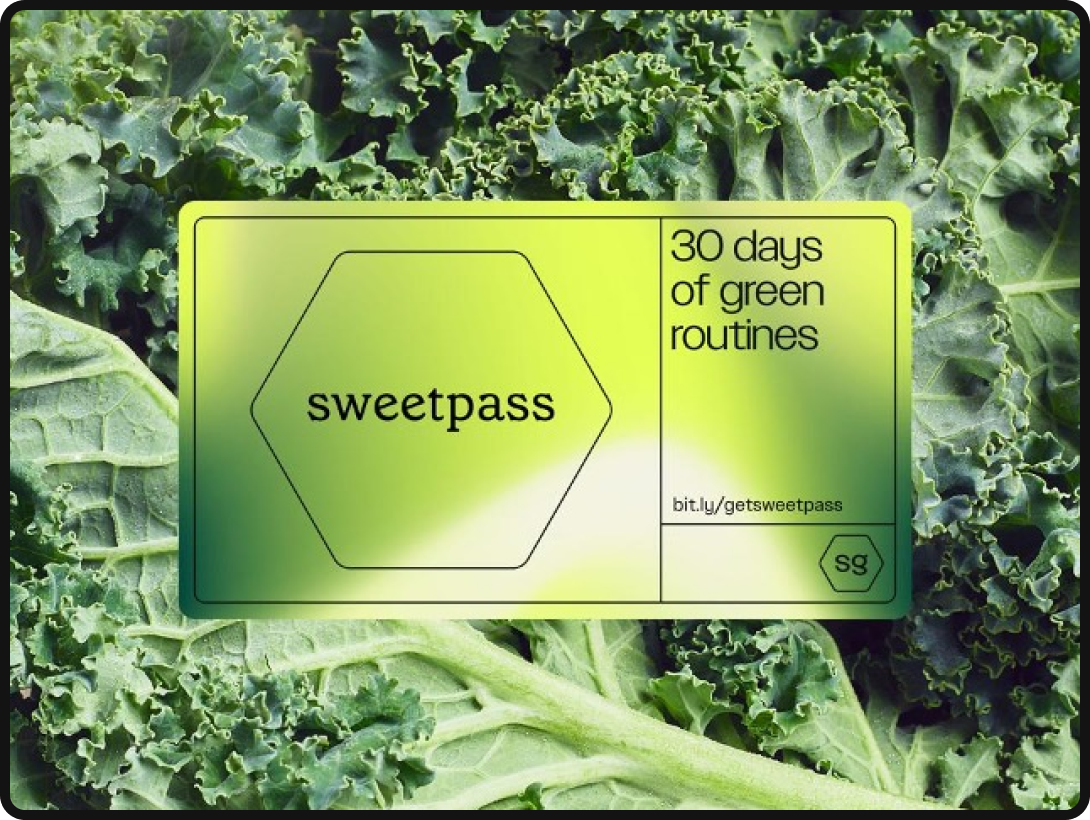The Sweetgreen evolution started in a dorm room back in 2007 when three college students at Georgetown University realized the need for clean, healthy food that was also easy to grab on the go. Fast forward 7 years, and the company boasted $50 million in revenue while securing $100 million in venture funding. The Sweetgreen marketing strategy had essentially redefined the fast-food industry. While the company saw early success, Sweetgreen still continues to create a new category in the restaurant industry. How did the popular salad chain experience rapid growth in an industry that is not typically fast-growing? The answer lies between a scalable yet intimate marketing strategy and transparent food sourcing.
Sweetgreen falls into the category of companies that have successfully built a solid foundation of brand values and a strong mission — yet at the same time, the brand consistently iterates and taps into the latest solutions and strategies to scale and achieve sustainable growth. Balancing a community-driven, consistent, and impactful storyline with a growth strategy informed by experimentation and the latest solutions is no easy feat. Yet this exact combination of growth and brand ingredients makes Sweetgreen a brand capable of redefining a whole category.
Sweetgreen’s rise to success has not been without bumps — and stakeholder frustrations. During the Covid-19 pandemic, when many restaurants shut their doors, and long-standing eateries failed to keep up, Sweetgreen too experienced a dramatic drop in sales. Facing the time-old battle between staying connected to customers and unlocking growth, the industry’s only technical “unicorn” focused on intimacy at scale, owning their brand identity, and fostering community engagement.
Let’s dig deeper into each ingredient that created the perfect “Grow Your Brand” bowl for Sweetgreen.
Want to scale growth in the food industry? Check out our list of the top food marketing agencies.
Sweetgreen Marketing Strategy: Unlocking Intimacy At Scale
The concept of intimacy at scale can be broken down into two core components. The first is to go slow to speed up. It is tempting to expand as quickly as possible, but the most successful companies know what to focus on by first listening to their audience. In the context of Sweetgreen, the company focused on a few core brand values at a time and remained in the DC Metropolitan Area before expanding. They took their time experimenting with new ways to communicate their mission and ensure sustainable growth in potential target markets before laying down the blueprint.
The second is to embrace modularity. One of Sweetgreen’s earliest blunders was underestimating how fast the world changes. Companies must design products and experiences for the future and scale a flexible marketing strategy that is prepared for change. The versatility of the Sweetgreen marketing strategy allowed it to move forward with a complete rebrand at the height of Sweetgreen’s scaling and added more flavor to it. This is clearly depicted through their new retro-style emails, marketing collateral, and typography, along with their choice of partnerships.
As brands mature and standard operating procedures to streamline efficiencies occur, their unique voice and culture often get lost.
“There are all of these cautionary tales about startups or restaurants that grew massively, transforming into slow-moving corporate entities where quality takes a nosedive, products become more bland, customers are no longer at the center, and employees feel less involved and inspired” explains Sweetgreen founder Nathanial Ru. “We’ve been determined to avoid that.”
Sweetgreen Goes Viral
Ru illustrates how fast-growing companies must maintain intimacy with their customers, partners, and employees by putting customer-centric metrics at the forefront of business. It is common to think of metrics such as revenue or return-on-ad spend (ROAS) as key performance indicators (KPIs) for a company. To accurately measure a brand’s stickiness or the loyalty of its customers, companies must also measure metrics such as Net Promoter Score (NPS), frequency by channel, and churn over time. Sweetgreen understood the need to measure viral coefficiency. In other words, they made Sweetgreen go viral.
Meeting at the intersection of the latest tech and value-driven branding, Sweetgreen is the epitome of performance branding. Learn more about how the worlds of brand and performance marketing are merging here. Putting the brand first — and supporting it with the growth strategies necessary for scaling, which we will discuss shortly — ultimately triggered Sweetgreen’s viral growth. Customer emotions are the driving force behind brand virality. Brands seeking to evoke an emotional response know to find a core value proposition early on that continues to keep their audience engaged.
Take Sweetgreen’s social media presence, for example. Sweetgreen customers flock to Twitter to share their salad updates with the world, with no incentive other than their love for Sweetgreen. The company’s blend of brand equity and user-generated content continues to bolster Sweetgreen’s brand virality.
Transform your narratives, engage their audiences authentically, and boost your success.
New Brand Look, Same Core Values
Not long ago, Sweetgreen revealed a new identity with updated store signage and a revamped marketing strategy. The rebrand came at the height of the brand’s growth and took their devotion to building intimacy and customer relationships a step further. In other words, it didn’t just add more personality to the brand — it added a blend of nostalgia, earthly yet bright colors, and a sense of newness to a brand that so many already love.
You’ll notice their team members sporting brand-new uniforms in store. Further building on their mission to make fast food healthy, Sweetgreen focused on owning three core values: real ingredients, the natural cooking process, and the people behind the food. Taking inspiration from hand-painted vintage cookbooks paired with modern photography and earthy, vivid colors, Sweetgreen introduced a more variable, expressive brand voice that fully immerses Sweetgreen lovers into the world of food.
The company invested its efforts into translating its brand ethos through a brand-new logo, an updated menu design, and digital products. Check out their new logo below:
Along with the electric-green name comes a new background color appropriately named “kale,” true to Sweetgreen’s focus on real ingredients. You’ll notice these updated brand guidelines translated to team uniforms as well.
Through it all, Sweetgreen’s mission to build healthier communities by connecting people to real food works to educate and inspire future generations on the importance of good eating. Sweetgreen’s brand values are at the heart of the Sweetgreen marketing strategy. So much so that their “Our Mission” navigation bar option sits right next to “Our Menu” at the top of their website.
“We’re actually not even valued like a tech company. If you look at the valuation, it’s much more like a high-growth food company,” says co-founder and CEO of Sweetgreen, Jonathan Neman. “We leverage technology to build a better experience and make smarter decisions. And I think it is an accelerant to how we can grow and scale and build our model. However, at the core of what we do, we are a consumer brand.”
Sweetgreen Today: Leading The Sustainability Movement
Brands that spark conversations and lead cultural movements deserve attention. Pulled directly from their mission statement, Sweetgreen believes climate change is the defining challenge of our generation. Their plant-forward thinking comes across through a totally transparent supply chain and sourcing process as well as a rotating, seasonal menu. (Although, I am currently enjoying my favorite Sweetgreen Shroomami Bowl while writing this post, secretly hoping they never take it off the menu.)

Sweetgreen gives their menu extra thought by calculating the carbon footprint for each menu item from their specific suppliers. This data is used at every stage of the business, and directs menu changes as need be. Furthermore, Sweetgreen restaurants are physically constructed and optimized for a more sustainable future.
Impressively enough, the brand matched its mission with its margins. As their brand grew, so did their impact on the world.
Sweetgreen’s Community Of Local Suppliers
Sweetgreen not only works closely to source and strategize with their local suppliers to minimize their carbon footprint, but gives back to these same suppliers to form a community. They interact directly with each supplier to make sure their brand values and customer needs are being met. In fact, before the Sweetgreen leadership team decides where they want to open a new location, they identify and meet with local suppliers first. Sweetgreen’s marketing strategy relies on a transparent yet scalable supply chain. Deepening supplier relationships and demand forecasting help Sweetgreen overcome potential disruption.
Strategic Partnerships: Game, Set, Eat Like A Pro
Along with Sweetgreen’s rebrand came their first-ever athletic partnership with professional tennis player Naomi Osaka. The well-timed national campaign gained traction at the start of the US open, which took place from Aug. 30 to Sept. 12, 2021. This approach included bringing awareness to the importance of wellness through digital ads and out-of-home (OOH) advertising in the ecosystem best versed for this type of signage, New York City. Lets not forget the custom-curated Naomi Osaka Bowl.
Their ad copy engages the average Sweetgreen consumer base as well as a new audience of Gen-Z fans. Sweetgreen users who purchased the Naomi Osaka Bowl, specifically via the Sweetgreen app (for pick up or delivery) won a chance to watch her compete at the US open. I’ll get to Sweetgreen’s heavy focus on their mobile app in a moment. Watch the full ad here.
Other notable partnerships include Sweetgreen’s head-turning decision to enter the esports arena. The brand recognized how to infiltrate the Millennial and Gen Z traffic early on by cross-promoting with major YouTube gaming celebrity, Valkyrae. The key takeaway here is the opportunity for brands to reach a new audience by understanding where their target communities interact and engage. Learn how to get in on the conversation by reading up on the top growth marketing trends to follow in 2024.
Sweetgreen quickly matured to be a publicly traded company valued at $5.5 billion when it began trading in November of 2021.
Sweetgreen Is First To Go Mobile-First
Sweetgreen thinks like a tech company, designing food culture for a digital age. Parallel to many areas of the Sweetgreen marketing strategy, the company was an early mover as one of the first to release an app in its space. Their app has come a long way since then, to a fully customized in-app experience that feels almost like you are inside your local Sweetgreen store when placing an order.
“Navigating through dropdowns or grids of standard menu options is tedious, and we wanted to reduce the cognitive load of ordering food online. We incorporated everything from dietary restrictions to order history to create the most customized experience possible. It could be adjusting the heaviness of the dressing, specifying if you want the salad mixed, or using the ‘save to favorites’ button so you can quickly re-order your custom creations,” says Sweetgreen co-founder Nathaniel Ru. “Eventually this will evolve to using this data to present you with a completely personalized, curated menu based off your preferences, more similar to Spotify than a salad chain” Ru continued as the brand plans for the future.
The brand boasted a 178% increase in digital orders through its app during the Covid-19 pandemic. Every feature of the app is designed with the needs of their loyal fanbase as the driving force. It was a frictionless transition from seamless, contactless ordering to incorporating the beloved rewards program. Sweetgreen continues to push use of their mobile app through their paid marketing efforts on Instagram and Facebook.
To encourage even more users to order through the app, Sweetgreen doubled down on their approach by debuting an online-only, “Eat Like A Chef” menu. Inspiring failed DIYers and air fryer connoisseurs to finally live out their dreams through a menu crafted with go-to menu items from several renowned chefs with years of experience mastering the craft. The new “Collections” platform puts choice at the hands of the Sweetgreen user and makes it a personalized experience from prep to pack. Sweetgreen kept their focus on community, with 100% of proceeds from this new collection being donated to the Independent Restaurant Coalition for one day only to help save local restaurants impacted by Covid-19.
Sweetgreen Joins The Rise Of Subscription Commerce
Subscription commerce is growing at an exponential rate with no sign of slowing down. In 2022, 15% of online buyers have signed up for one or more subscription services, according to a study conducted by McKinsey & Company. Ultimately, the subscription economy is a way for brands to create a source of recurring revenue while also creating “forever customers.” It’s a win-win strategy. On the consumer side of things, subscription businesses often drive greater value at a lesser price and come with increased convenience.
Sweetgreen wants in on the action and is testing a $ 10-a-month subscription membership program where users get $3 off on all orders throughout that month. Introducing Sweetpass, the latest effort in the Sweetgreen marketing strategy to drive customer loyalty.

Those who have been following the brand for some time may remember Sweetgreen’s initial loyalty program, launched over five years ago, that rewarded customers with $9 in credit for every $99 spent in-store or on the app. This price point was too high, and Sweetgreen customers were not able to feel the immediate impact of savings.
“We sunsetted that program because it was more of a one-size-fits-all approach. We wanted to iterate our loyalty program to understand better what customers want and what the future of loyalty looks like,” explained Daniel Shlossman, senior vice president of digital and growth.
All eyes are on Sweetpass as the company graduates out of the pilot phase to gauge and understand the impact of subscription services on driving high usage within the food space.
Takeaway
Sweetgreen took the world by storm with their experimentation-first Sweetgreen marketing strategy. Sweetgreen keeps it simple by focusing on intimacy at scale, their core brand values and playing an active role in the community. Businesses can take a leaf out of their playbook to analyze how to unlock growth while staying true to brand values. Sweetgreen founders worked with the team at COLLINS, a San Francisco and New York-based strategy and design consultancy, to bring their rebranding to life.
Ready to bring your brand’s growth marketing strategy to the next level?







